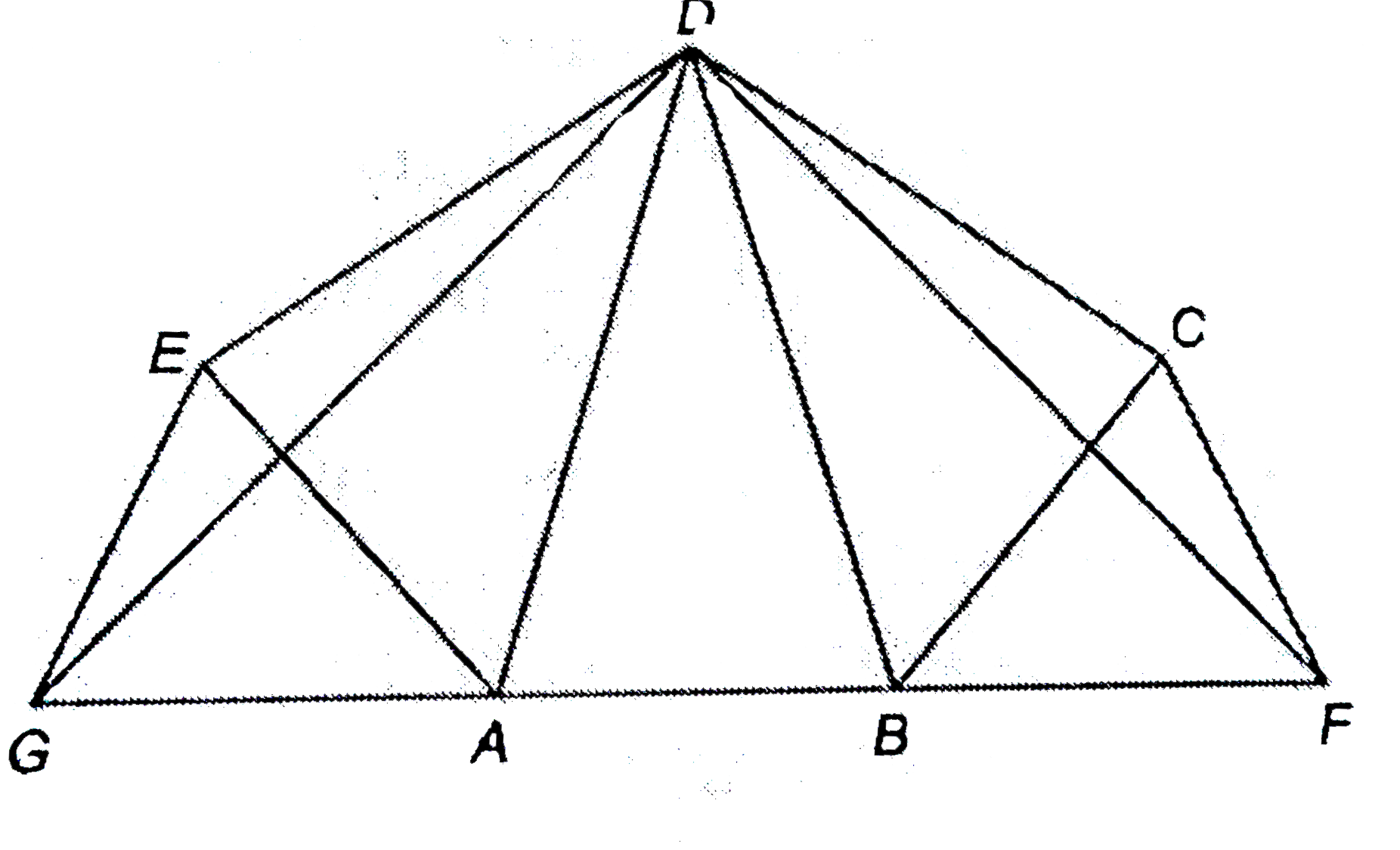Draw all the diagonals of a pentagon ABCDE and name them.
To solve the problem of drawing all the diagonals of a pentagon ABCDE and naming them, follow these steps:
1. Draw the Pentagon:
- Start by drawing a pentagon. Label the vertices as A, B, C, D, and E in clockwise or counterclockwise order.
2. Identify the Vertices:
- The vertices of the pentagon are A, B, C, D, and E.
3. Understanding Diagonals:
- A diagonal is a line segment that connects two non-adjacent vertices of a polygon. In a pentagon, we need to connect vertices that are not next to each other.
4. Draw the Diagonals:
- Connect the following pairs of vertices to form diagonals:
- Diagonal 1: Connect vertex E to vertex C (EC).
- Diagonal 2: Connect vertex D to vertex A (DA).
- Diagonal 3: Connect vertex E to vertex B (EB).
- Diagonal 4: Connect vertex C to vertex A (CA).
- Diagonal 5: Connect vertex D to vertex B (DB).
5. List the Diagonals:
- After drawing, list the diagonals:
- EC
- DA
- EB
- CA
- DB
6. Count the Diagonals:
- Count the total number of diagonals drawn. In a pentagon, there are 5 diagonals.
Final Answer:
The diagonals of pentagon ABCDE are:
1. EC
2. DA
3. EB
4. CA
5. DB
- Start by drawing a pentagon. Label the vertices as A, B, C, D, and E in clockwise or counterclockwise order.
- The vertices of the pentagon are A, B, C, D, and E.
- A diagonal is a line segment that connects two non-adjacent vertices of a polygon. In a pentagon, we need to connect vertices that are not next to each other.
- Connect the following pairs of vertices to form diagonals:
- Diagonal 1: Connect vertex E to vertex C (EC).
- Diagonal 2: Connect vertex D to vertex A (DA).
- Diagonal 3: Connect vertex E to vertex B (EB).
- Diagonal 4: Connect vertex C to vertex A (CA).
- Diagonal 5: Connect vertex D to vertex B (DB).
- After drawing, list the diagonals:
- EC
- DA
- EB
- CA
- DB
- Count the total number of diagonals drawn. In a pentagon, there are 5 diagonals.
The diagonals of pentagon ABCDE are:
1. EC
2. DA
3. EB
4. CA
5. DB
Topper's Solved these Questions
- GEOMETRYBOOK - NCERT EXEMPLARCHAPTER - GEOMETRYEXERCISE - Exercise (State whether the statements given in questions are true (T) or false (F):)
10 Videos
- FRACTIONS AND DECIMALS BOOK - NCERT EXEMPLARCHAPTER - FRACTIONS AND DECIMALS EXERCISE - ACTIVITY
1 Videos
- INTEGERS BOOK - NCERT EXEMPLARCHAPTER - INTEGERS EXERCISE - Exercise
42 Videos
Similar Questions
The given figure shows a pentagon ABCDE .drawn parallel to DA meets BA produced at G and CF drawn parallel to DB meets AB produced at F. Prove that the area of pentagon ABCDE is equal to the area of triangle GDF.
View SolutionThe given figure shows a pentagon ABCDE.EG drawn parallel to DA meets BA produced at G and CF drawn parallel to DB meets AB produced at F. Prove that the area of pentagon ABCDE is equal to the area of triangle GDF.

View Solution
Knowledge Check
The number of diagonals of a pentagon is
A3B4C5D10If the side of a regular pentagon be 5 cm, find the circumference of the pentagon, in cm.
A21B20C30D25How many numbers are there from 100 to 285 which are divisible by 5?
A40B38C35D42
If the length of the diagonal AC of a square ABCD is 5.2cm, then the area of the square is :
View SolutionThe diagonals of a parallelogram ABCD are along are the lines x+3y=4 and 6x-2y=7. Then ABCD must be a
View SolutionIf the diagonals of a parallelogram ABCD are along the lines x+5y=7 and 10x−2y=9, then ABCD must be a
View SolutionThe diagonals of a parallelogram ABCD are along are the lines x+3y=4 and 6x-2y=7. Then ABCD must be a
View SolutionThe diagonals of a parallelogram ABCD are along are the lines x+3y=4 and 6x-2y=7. Then ABCD must be a
View Solution
